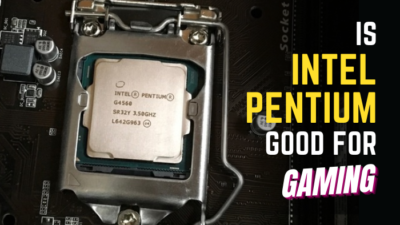“Gold-Gold, Dear Gold, Where Are You?” It’s kind of every man’s dream to find the treasure of gold.
When you get your hands on the CPU and see the yellow luster on the pins, you may wonder, are these CPU pins made of gold?
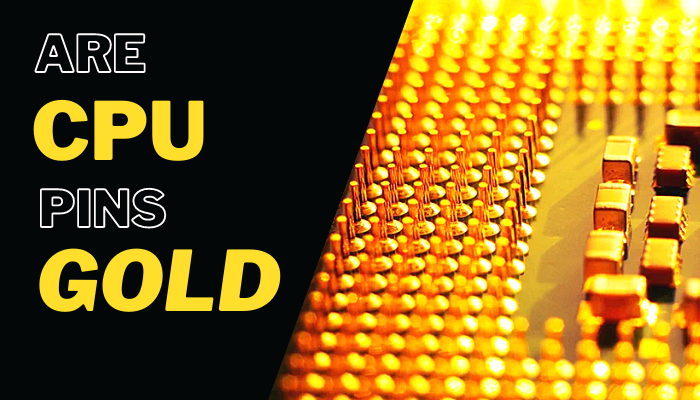
In this article, I will answer that question. I will also cover all the questions you can think of regarding the golden CPU pins.
So, tag along.
Are the CPU Pins Made of Gold?
Shortly say, No. The processor’s pins are not made with solid gold. The pins are made with other metals, such as Platinum or Palladium. However, there is a small amount of gold layer on the pins. That’s why it looks like they’re built from gold, and many users often get confused.
Let me give you brief details first if you don’t know what the CPU pins are.
The small pointy metal things you see on the processor’s surface are called the CPU pins. If your CPU has pins on its body, it implies your CPUs socket type is PGA (Pin Grade Array).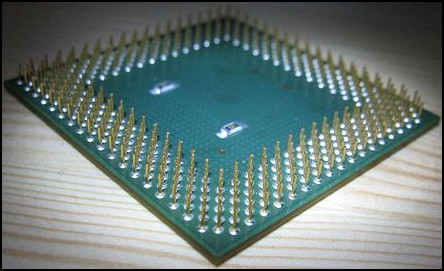
It may break your heart a little when you find out that solid gold is not used to make the CPU pins. Only a bit of gold layer is used on those pins.
The amount of gold is so tiny that if you take all the pins out of the processor and try to retrieve the gold, maybe you can get 100 to 200 mg of gold.
So, if you dream about making a gold bar and becoming a billionaire from recovering the gold from the processor, you will need an ocean amount of CPUs.
There is another fact you should be aware of.
If you take some sandpaper and give a quick rub to the pins, the layer of gold will easily come off. And the gray metal core below the layer will unveil.
Go to the following section to know why the CPU manufacturers use gold on the pins.
If you accidentally spill any thermal paste on the processor’s pins and don’t know how to remove them, read our separate guide, which will help you learn how to remove the thermal paste from the CPU pins.
Why Do the CPUs Have Gold Plated Pins?
Manufacturers use the gold layer to give the pins a good deal of conductivity. Though silver and copper have more conductivity than gold, they are more likely reactive. In a humid environment, they can easily be oxidized, which is very bad for the CPU.
Copper and silver are indeed the best conductive materials on earth. But, these metals have a significant disadvantage.
When these metals get in contact with air or the earth’s atmosphere, they oxidize and form an oxide layer outside the metal.
The color of copper starts to turn into a turquoise patina color like the lady liberty. Or, it may turn into Fertile Green.
You can’t use silver, either. Because when silver contacts with air, it becomes silver oxide, and creates a white powder. This powder damages the silver’s natural reflective form.
As you can see, silver and copper are awful choices to use as external electrical connectors.
So, what can manufacturers do in this situation? They did the same thing a coach does when he loses his lead and substitute quarterback. And that is, he uses the third-choice quarterback.
That’s precisely the same thing the CPU manufacturer did. They move to the third-best conductive material: Gold.
At room temperature, Gold is the best electricity-conductive material. It is inactive around oxygen and doesn’t oxidize. Its physical condition stays good and doesn’t rust.
That’s why it’s the perfect material for sensitive and tiny CPU pins.
While you install your CPU, the pins can bend by accident. If it happens, and you want to repair them, read how to fix bent CPU pins.
How Much Gold is in a CPU Pin?
The amount of gold you can get from a CPU depends on how many pins there are and how much they weigh. If the pins weigh around 500 grams, you can get approximately 1 gram of pure gold. Though you may get more if there are more pins, the margin will be around 1 gram.
Don’t mix the weight of the whole CPU package with the pins, by the way.
Anyway, do you know how much an average gold bar weighs? It is more likely 400 ounces or 11.3 kilograms.
The quantity of gold you can get from a processor appears to be pretty low if you compare it to a gold bar.
The quantity is even lower in laptop CPUs.
For 500 grams of laptop pins, you can probably get 500 to 600 mg of gold. It doesn’t seem like a lot, does it?
This amount of gold won’t make you rich overnight. Apparently, you will need more than 10 million CPU pins to make a single bar of gold.
That should give you an idea of how small of the amount of gold there actually is in those CPU pins.
Did you bend your processor’s pins by mistake? Then you must read our other contents, which will let you know whether bend pins are bad for a CPU.
Which Metals are Used to Make a CPU Pin?
The CPU manufacturers mostly use Platinum to make a CPU pin. Besides Platinum, manufacturers also utilize Palladium, Ruthenium, and Iridium to create CPU pins. However, based on the demands of electrical conductance, manufacturers use different metals to build CPU cores.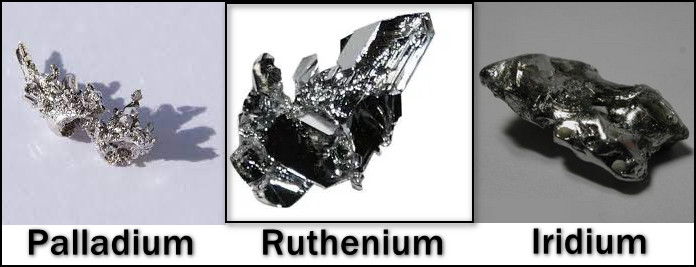
These metals: Palladium, Platinum, Ruthenium, and Iridium, are pretty much more precious than gold. But don’t start to collect the pins so that you can get some money out of it.
Manufacturers use these metals to protect the CPU from getting magnetized. Moreover, they are quite conductive to electricity, and electrons can effortlessly flow to the processor.
Gold is also quite electrically conductive. That’s why, from that tiny layer of gold, electrons can comfortably flow with ease.
If the processor somehow gets damaged due to overheating or other reasons, go through our separate guide on whether you can repair a CPU.
Is It Worth Extracting the Gold Out of CPUs?
To be honest, extracting gold from the CPU isn’t worth much. Even if you use some high-quality recyclable materials, it’s utterly profitless. After going through the recycling process, if you retrieve 1 gram of gold, you can get around $60 in the present market.
The layer of gold is pretty thick. Probably around 0.2 µm. So, it’s pretty hopeless if you expect to get a bar level of gold.
However, there is a little hope if you can gather a large margin of CPUs and refine gold professionally & with good recyclable tools. But in the end, the income won’t make much difference with the cost you have to spend your money to achieve the gold.
Moreover, the refining process is quite a lengthy process. And you have to deal with several hazardous materials such as Hydrochloric Acids, Nitric Acids, Mercury, etc. Plus, the gold can be impure due to the presence of other materials.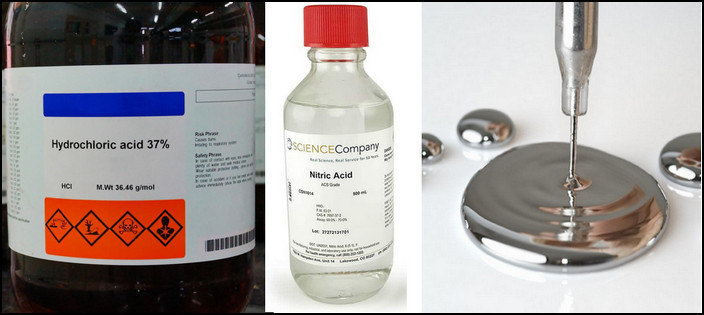
If it is worth that much to go through all that trouble, why do you think people are not rushing to collect old CPUs and make big money from them?
I, personally, don’t want to go through all that hassle since I am very concerned about time & safety. You also shouldn’t.
If you unintentionally bend the CPU pins and think about returning the CPU, read first whether you can return a CPU with bent pins.
FAQs
Can you extract gold from the CPU?
Yes, you can extract gold from the CPU. From a single processor, you can possibly get 100 to 200 mg of gold.
What part of the computer has the most gold?
Motherboard has the most gold in its system among all the PC components. There is a thin layer of gold you will find on the motherboard’s surface.
How much gold is in an old CPU?
In an old CPU, you may get close to 300 mg of gold. Possibly, you can get around $20 for that amount of gold.
Final Thought
It’s hard to resist any human when they hear the word gold. But don’t be tempted.
However, in modern days, some e-waste recycling companies are making quite a good fortune from extracting gold and other valuable materials. But I won’t recommend that if you try to do something like that single-handedly.
I hope I have cleared all your doubts about whether a processor pin is made of gold or other materials. I have also explained what you should or shouldn’t expect from that.
Comment below if you have any additional queries.
Peace!

